Shungite: properties of a stone, its use, benefits and harms
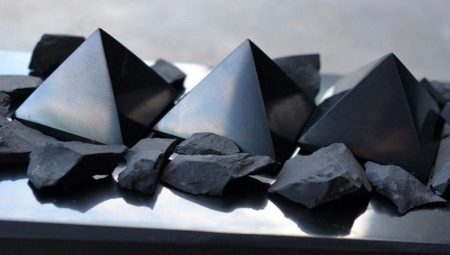
Shungite is one of the most demanded minerals not only among magicians and astrologers, but also among healers in alternative medicine. It possesses a number of unique magical and physical properties, is able to favorably influence the general state of human health.
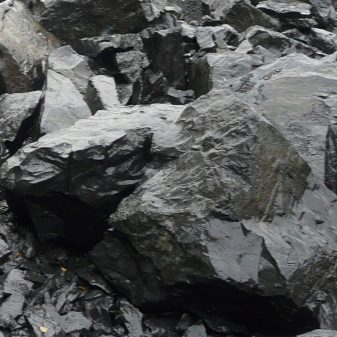
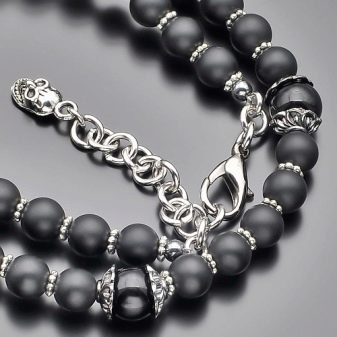
What it is?
The meaning of the term "shungite" was originally used in 1879 to describe a mineraloid with a carbon content of more than 98%. Recently, it has also been used to describe shungite rocks, which often leads to confusion.
The stone has two main ways of bedding:
- material scattered inside the rock;
- homogeneous deposits.
Geologists know shungite as a peculiar form of carbon obtained during the metamorphism of crude oil. The Karelian stone is called so because it is actively mined in Karelia.

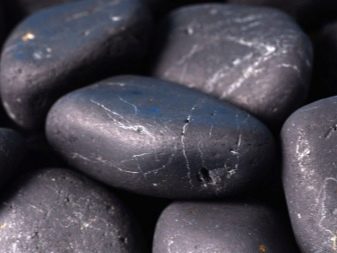
Shungite looks like hard asphalt (bitumen), but it is classified as pyrobitumen because it does not melt. It also resembles anthracite charcoal. Heated in butane, it shatters into fragments, a faint smell appears, but it doesn't burn. Hardness - 3.5-4.0 on the Mohs scale.
Shungite is similar to coal, has the ability to conduct electromagnetic and geothermal energy... This is a transformation stone with a huge list of amazing benefits, thanks to its nature and composition, it is unlike any other mineral on the planet.
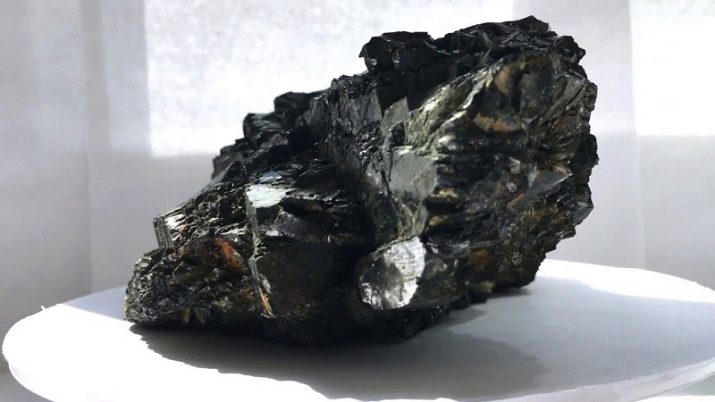
The stone is mainly composed of carbon, up to 98% in some cases, but an interesting fact is that this carbon is not mineral graphite. Shungite is considered to be a metamorphosed shale.The chemical composition is similar to anthracite (metamorphosed coal), but its genesis is different. Shale is a former accumulation of marine microorganisms (bacteria, algae), but formed from organic matter, coal is deposited in terrestrial environments.
The color of the mineral is black, does not contain graphite. Carbon is nearly structureless (amorphous or nanocrystalline) and forms coal seams. It is believed to be one of the oldest known manifestations of the oil formation process. Currently, there is no crude oil in Karelia, but shungite is believed to have been a rich source of it many centuries ago.
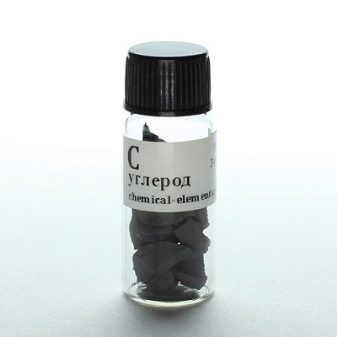
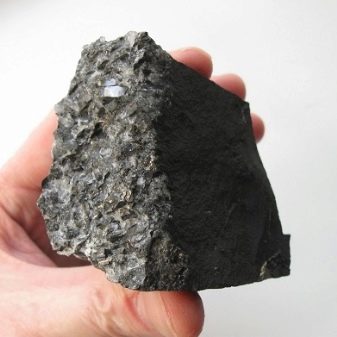
For some time, it was known that shungite contains fullerenes (carbon nanotubes and spheres), but later studies did not confirm this. It has long been known as a natural medicine. True, shungite has antibacterial properties, but it is unlikely that it possesses all the abilities attributed to it (it kills and devours everything that harms people, concentrates and restores all that is good).
The fact that this stone is old does not give it any magical power. After all, two billion years is nothing special in geology. Many gneissic rocks are much older than this, unfortunately, they are mostly abandoned and have value only as railroad ballast.
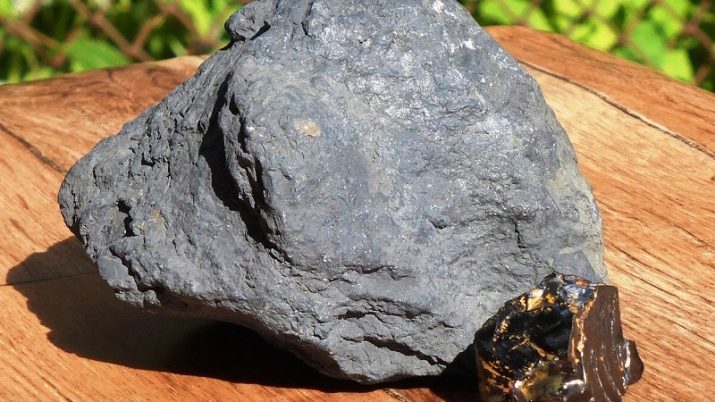
In the rock, shungite veins are rarely more than 300 mm thick, more often they are even thinner, on average from 50 to 100 mm. The rest is shale and dolomite, which is mixed with the rock. Over time, wind and water destroy the top layer of the deposits, which is why the stone turns into earth.
According to preliminary estimates of geologists, today there are about 35 million tons of the mineral in the territory of Karelia, but these volumes are consumed at a high speed, since the stone is widely used not only in jewelry, but also in industry.
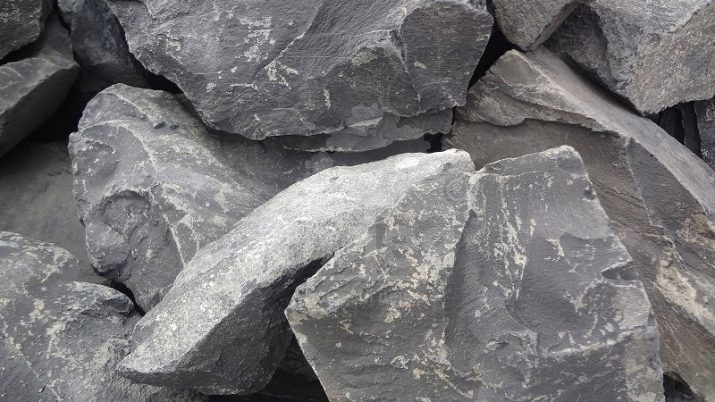
Origin story
Shungite has been used in medical practice since the beginning of the 18th century. Peter the Great was the first to believe in the properties of the mineral and began to insist on their use. He used the infused water not only on his own, but also recommended giving it to soldiers in the army. In long hikes, there was always shungite in the water, which purified the liquid, thereby preventing massive infectious epidemics. Today, scientists have been able to prove that the stone really has unique antibacterial properties.
Since that time, the mineral began to be used as a pigment for creating paint; it is supplied to the market under the name "natural black shungite" or "soot". Already in the 700s, it became clear that fine stone chips can be used as an insulating material.
To obtain shungizite, it was necessary to heat the stone to 1130 ° C, after which the filler began to belong to low-density building materials.

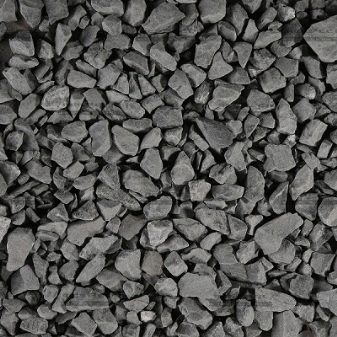
Shungite belongs to mineraloids. It represents one of the earliest formed oil fields, which dates back to the Precambrian era. The land around Lake Onega in the western part of Russia, specifically the Republic of Karelia, is covered with rocks of the Paleoproterozoic period, which are about two billion years old. These include metamorphosed oil residues, including both shale sources and crude product.
Apparently, a large area here was once covered with salt water lagoons, which were located near the chain of volcanoes. As a result of normal life processes, the ecosystem consisted of a huge number of unicellular algae. In turn, the volcanoes produced the necessary nutrients for them. The sediments that appeared consisted of the remains of these microorganisms. Later, these rocks were subjected to increased temperature and pressure, which turned the oil into shungite.
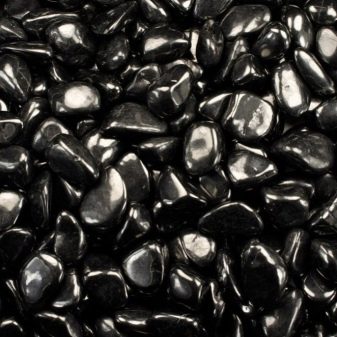

Place of Birth
The most famous settlement where a large shungite deposit is located, and accordingly, the stone is mined there - Karelia, not far from the village of Shunga (hence the name of the mineral). Karelian shungite is very old, which makes it one of the earliest known occurrences of shale, albeit in a metamorphosed form. After much research, there is no doubt that the mineral is of biogenic origin. Needless to say that it belongs to very rare minerals, since very few other deposits have been found on the territories of other countries.
In Russia, geologists managed to find shungite in Kamchatka, which is not surprising, since there is always a high activity of volcanoes, and in the territory of the Chelyabinsk region in coal mines. There are small deposits in the Republic of Congo, Austria, India and Kazakhstan.
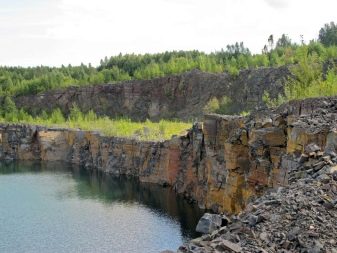

Benefit and harm
Shungite has a number of unique positive effects on the human body, which are actively used not only in cosmetology, but also in medicine. There are a wide variety of treatments using the mineral. The use of a liquid infused with a stone helps to improve the condition of diabetics. This alternative method of treatment helps to improve the condition of the heart and blood vessels, the gastrointestinal tract. In general, the mineral is believed to have a healing effect on the human body.
Among other things, the mineral regulates pressure in a favorable direction, helps to cope with chronic fatigue, gives additional strength to the body so that it recovers faster... Shungite is the only known source on the planet that contains natural fullerenes - carbon molecules. Fullerenes act as antihistamines, they promote cell regeneration and growth, help to establish a healthy balance between all systems in the human body. Moreover, they act the main helpers in the fight against cancer processes. Shungite water improves immunity and helps fight colds.


Stone accessories are capable of protecting against electromagnetic radiation, including those emitted by TVs, computers, microwave ovens, mobile devices and other sources of EMF. Such radiation can be harmful if a person is exposed to it for a long time.
The mineral is recommended for the following diseases:
- lack of iron in the blood;
- arthritis;
- respiratory problems;
- violation of the microflora of the stomach;
- chronic problems in organs such as the kidneys and liver;
- diabetes;
- diseases of the gallbladder and pancreas;
- ARVI, FLU, colds;
- cholecystitis.


Without a doubt, shungite is useful and has healing properties, but there are a number of contraindications to it and the therapies carried out with it. It is not recommended to use shungite water for people who have a predisposition to the formation of blood clots, and those who suffer from chronic inflammatory processes in the body. You should not use this auxiliary agent as the only one in the fight against a tumor, since shungite water cannot be a 100% substitute for drugs.
Doctors never stop reminding that treatment with non-traditional methods in the absence of appropriate knowledge leads to the emergence of chronic diseases and may even turn out to be dangerous to human health. Not every water that is infused on the stone can be eaten unboiled, since it does not remove pathogens. Using both cold and hot compresses can be harmful if you don't know when a particular method is used.
Of course, it is extremely important to see a doctor in the presence of acute illnesses, and not to delay self-medication.
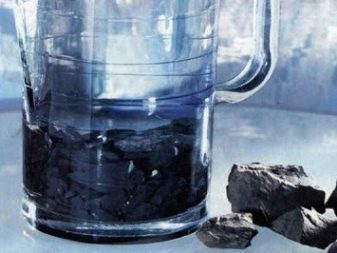

Magical properties
Shungite is widely used in magic rituals and not only. It is advised to wear amulets made of minerals for those who need to learn how to properly concentrate energy.The stone is used to make talismans that protect against dark energy, it helps restore balance between soul and mind. In some European countries, shungite amulets are made to attract good luck and achieve success in the love sphere of life.
The mineral is able to stimulate:
- rejuvenation;
- spiritual growth;
- transformation;
- healing;
- spiritual elevation;
- higher consciousness;
- spiritual grounding;
- telepathy.


Shungite is believed to have a positive effect on chakra, which is known to be one of the cornerstones of healthy energy within the human body. When his soul is open, he can fully realize himself in life in all its manifestations.
The stone helps to protect the wearer's energy from those forces that drain it. Such amulets can often be seen on healers, since they have to not only often deal with negativity, but also give away part of their energy.
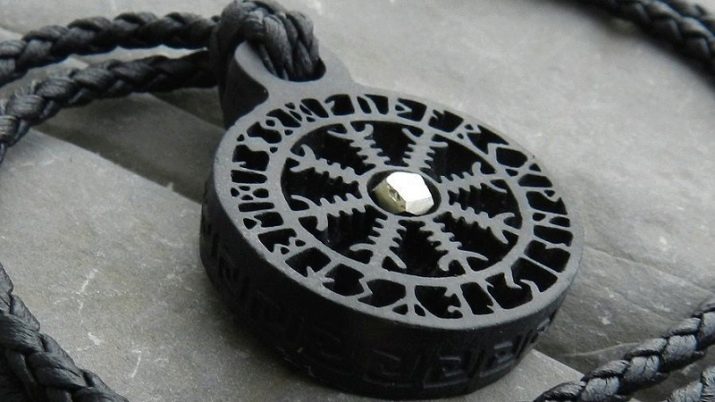
Among the metaphysical properties of a stone:
- fills the aura;
- activates the gift of prophecy;
- directs its energy to the core of mother earth;
- protects the holder and removes negative energy;
- removes negativity and negative thoughts;
- helps to cleanse and balance the chakra;
- opens a channel for communication with spirits;
- removes beliefs that do not serve the highest interests of a person;
- a catalyst for positive change and growth;
- helps to become wiser;
- gives a sense of understanding of being.


Varieties
Shungite rocks are classified exclusively by carbon content, while shungite-1 has a carbon content in the range of 98-100 weight percent, and a stone with an index of -2, -3, -4 and -5 has a content in the range of 35-80%, 20- 35%, 10-20% and less than 10%, respectively. A special variety is an elite stone with a carbon content of 90 to 98%. This is a mineralogical rarity, such shungite is located in the main rock formations in the form of irregular deposits or veins several centimeters thick. Such material is obtained only by hand in very difficult conditions.
It has a peculiar metallic luster, anthracite color, uneven. The described type of material is light and smooth to the touch. Contains 3-4 times more fullerenes than other varieties. The price of elite shungite is calculated per gram. The larger the stone, the higher the cost.
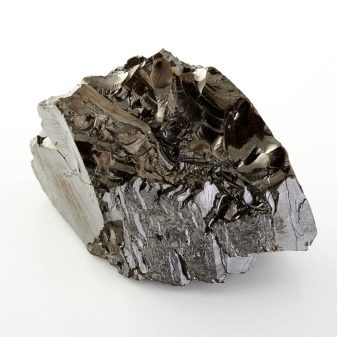

According to the hardness of the mineral, there are five categories, only one is recognized today as useful for humans, all the rest are used as ornamental material and in construction.
The healing mineral should have a black, velvety color; there can be no impurities or inclusions in it. Real shungite, which has special medicinal properties, is very soft, so a dusty imprint should be left on the fingers when touched. On sale you can often find a stone in which golden blotches are visible. This is chalcopyrite, which should not be there, because it dissolves when it interacts with water, and it becomes saturated with harmful substances.


Ornamental shungite, which is also often passed off as medicinal, has no useful properties. Their color can be not only pure black, but also with white small inclusions of quartz. In appearance, such specimens are very reminiscent of marble. Such crafts are suitable for home interiors and for conducting magical rituals, since they perfectly restore harmony in the room. They are not used for infusing water.
As for shungite used in the construction industry, it has a minimum carbon content. You can distinguish such an instance by its color, since more often it is not black, but rather gray with small splashes. The main area of use of the mineral is to protect the premises from radiation harmful to humans.
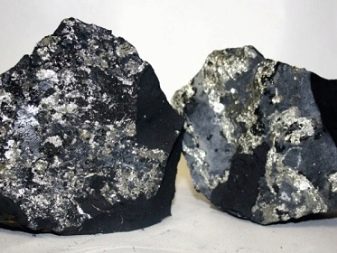
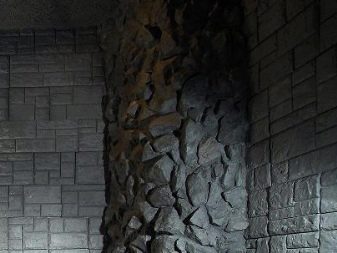
How to distinguish a natural stone from a fake?
Most often, the buyer does not have the opportunity to check the mineral for authenticity, although it is possible to determine its quality by the external signs that were indicated above.Most often, sellers are cunning and sell shungizite - a low-carbon material that has no useful properties. It should be noted that low cost is the first indicator that the stone does not have any useful properties.
A true high-carbon mineral has one distinguishing characteristic - it breaks easily. In this way, no one will give the buyer a check, but by the fingerprints, which remain as in contact with charcoal, one can immediately understand the nature of the mineral.
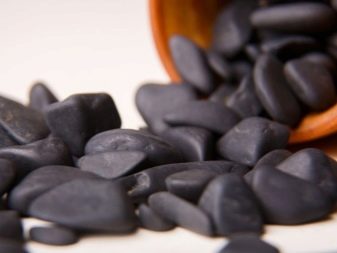
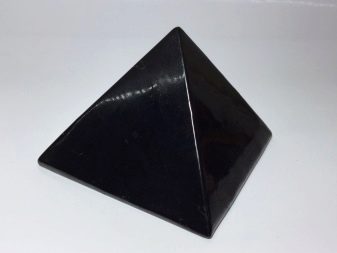
Moreover, precisely because the stone is soft, it is almost never polished, and as a result it has a matte surface. Even if the mineral is shaped like a pyramid, it will not be pointed, since such precision cannot be achieved.
But, all these checks are conditional, in fact, it is possible to say for sure whether the stone is real, checking it for electrical conductivity. To do this, take a simple battery, a flashlight bulb and a few wires. Attach one to the other, but through the mineral. Unlike other stones, shungite conducts electricity, so the lamp will light up.
When water is insisted on real medical shungite, after a few hours its taste changes, bubbles appear on the surface.

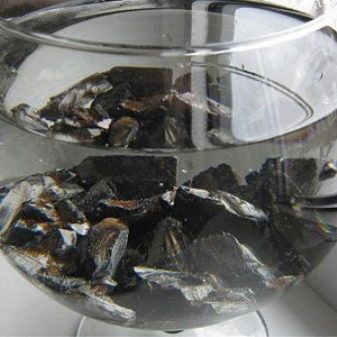
Application
Real shungite purifies and harmonizes the atmosphere in the premises, violates geopathogenic zones and reduces the negative impact of electromagnetic radiation, provides a person with energy and endurance. The stone is non-crystalline. The most common, most stabilized and studied form of fullerene-shungite is a sphere, the surface of which forms hexagons and pentagons.
This is a molecule with the greatest possible symmetry - it consists of fragments with pentagons, which a person does not encounter anywhere else in inanimate matter. A fullerene molecule is organic, and its crystal is a transitional form between organic and inorganic material. Therefore, shungite is often called "living stone".
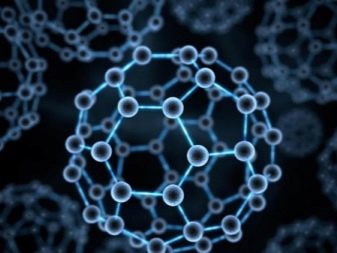

Products are made of shungite with a carbon content of about 30%. The remaining 70% consists of silicates, mica, oxides of iron, magnesium, potassium. Almost half of the elements of the periodic table are present in shungite. It is often used in the arrangement of aquariums, in a bath, since it takes in heat and then gives it back.
Shungite has long been considered a useful mineral, since the 1700s in Russia it has been used as a purifier and disinfectant for water, since it can perform the same role as activated carbon. Its electrical conductivity, typical of graphite and other forms of pure carbon, has prompted scientists to speculate that shungite could counteract the supposed harmful effects of electromagnetic radiation from things like cell phones. This property was later confirmed.
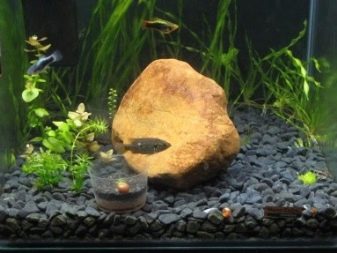

The effect of shungite on the composition and purity of water is extraordinary. It cleans the liquid from almost all organic impurities, including oil products and chlorine-containing compounds, nitrates and ammonia, metals. The unique composition of the stone is able to destroy cholera, streptococci and other bacteria by absorbing harmful substances contained in the water. Thus, the liquid is enriched with healthy trace elements and has healing properties.
Shungite turns water into biologically active... Filtered through shungite, it contributes to the proper functioning of the body and overall health. The use of such a liquid has a unique result in cosmetology. After the research, it became clear that shungite water smoothes the skin, increases its elasticity and restores youth.
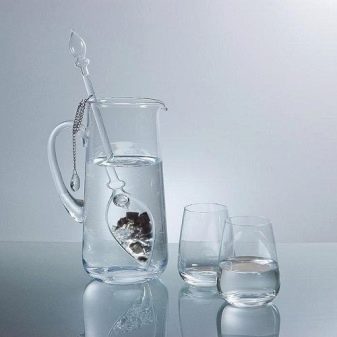
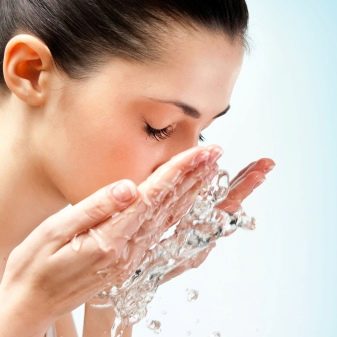
Regular washing with a stone-infused liquid helps to get rid of acne and skin inflammation, flaking and redness. If you use the liquid as a rinse for hair, then soon they will acquire the desired shine and silkiness, hair loss will decrease, roots will strengthen and dandruff will disappear.
Shungite water perfectly heals, therefore it is suitable for lotions. Moistened gauze is applied to the skin and lasts for 1.5-2 hours. Such compresses promote accelerated healing of cuts, calluses, bruises and burns. Thus, the liquid is used in alternative medicine in the treatment of arthritis, arthrosis and varicose veins. The warm infusion is used for gargling and douching for cervical diseases, tonsillitis, fever, gum disease, toothache and periodontitis.

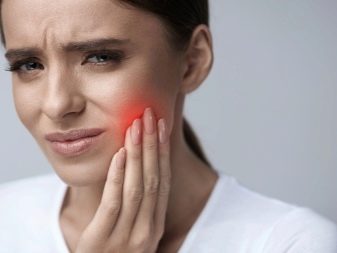
Baths with natural shungite help to calm down, relieve stress, fatigue, and normalize sleep. After the first course, small cracks in the skin, cuts, and regular procedures lead to rapid healing of postoperative scars, desquamation, eczema and fungus disappear.
On an industrial scale, elements of steelmaking and water treatment are made from the mineral, the mineral is used as a pigment for paint and a filler for plastic and rubber. It can be a good substitute for coke (metallurgical coal) and soot.
Shungite is actively used for making talismans such as balls, pyramids, cubes, protective plates and harmonizers. The possibility of using shungite against electromagnetic radiation is being considered.
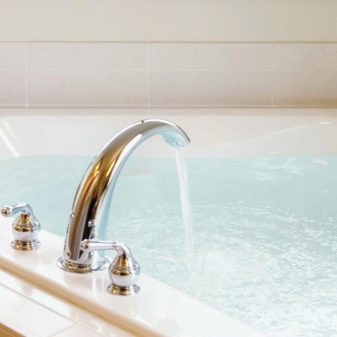
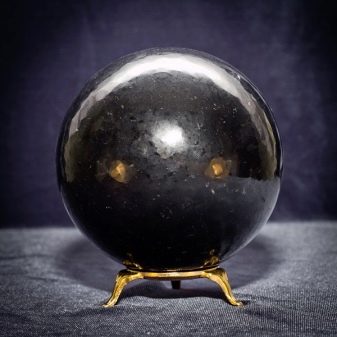
The cause of prolonged irritation, fatigue and anxiety of a person can often be the pathogenic zone where he lives. Scientists believe that to improve the condition, it is enough to simply put a pyramid of a mineral in the room, and it will cease to be a risk zone.
The structure should always be compass oriented. It is not recommended to place it directly under the bed. Once a month, you can rinse the product under running water to clean it, then dry it on a towel in direct sunlight.
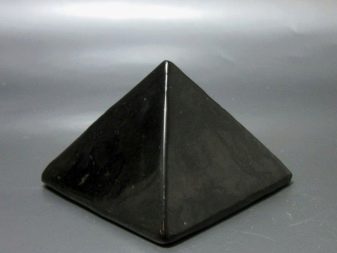

It is also used in jewelry, because it looks very attractive:
- pendants;
- beads;
- bracelets.
The processed stone is included in a setting of gold, silver or palladium. In addition, the mineral can be found in the construction of medical devices such as special pillows, blankets, rugs, and belts. Today it is often used in water filters and even in cosmetology. The magic stone is usually recommended to be applied to the left side of the body, since all the negativity accumulates here.


Care rules
Shungite products do not require any special care, but it is worth protecting it from falls and mechanical stress, since it breaks down quickly and easily. Decorations and souvenirs are washed with plain or slightly soapy water. You should try not to expose the mineral to additional heating.
When storing with other products, it is advisable to keep shungite jewelry in a velvet bag, otherwise they may scratch.
How to distinguish real from fake shungite, see the next video.









You have written very interestingly about the shungite mineral, thank you.